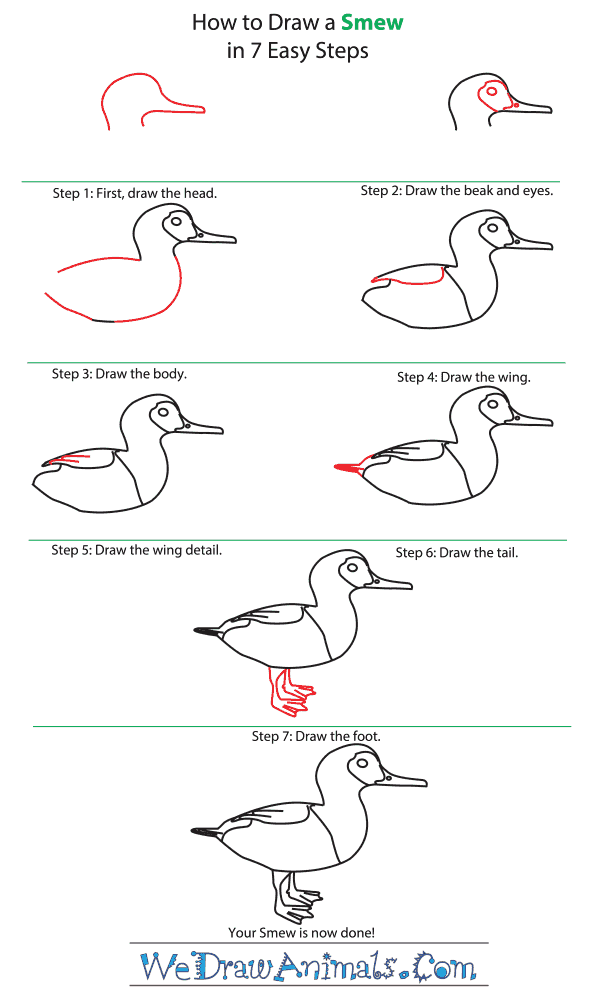In this quick tutorial you'll learn how to draw a Smew in 7 easy steps - great for kids and novice artists.
The images above represent how your finished drawing is going to look and the steps involved.
Below are the individual steps - you can click on each one for a High Resolution printable PDF version.
At the bottom you can read some interesting facts about the Smew.
Make sure you also check out any of the hundreds of drawing tutorials grouped by category.
How to Draw a Smew - Step-by-Step Tutorial
Step 1: Let's start our smew with a head. Draw a round shape and a long thin beak.
Step 2: Now let's draw the face. Draw a small circle for the eye, and then a bigger round shape and an even smaller circle at the top of the beak.
Step 3: Draw the body like a duck.
Step 4: Now, draw a line from the top of the body to the bottom. Then draw the wing.
Step 5: Add detail to the wing by drawing two horizontal lines.
Step 6: Draw the tail by connecting the wing and the bottom of the body.
Step 7: Almost done! Now you can draw the smew's feet. Remember they are webbed to help him swim better!
Interesting Facts about the SMEW
The Smew is a member of the duck family and the scientific term for them is Mergellus albellus. This animal has a more vicious beak than that of other ducks and the only species within the genus of Mergellus. Their mouth has saw-like edges and a hooked tip similar in shape to that of an eagle, used to catch freshwater fish when diving during hunting.
Did you know?
- It can be 17 inches long.
- The females and young males have a chestnut-red colored head.
- They lay 9 eggs in abandoned tree holes.
- The Smew can be confused with the Ruddy Duck.
- It has fossils that are over 13 million years.
- The adult males are black and white with a “cracked ice” pattern.
- It first lived in England 2 million years ago.
This type of animal hunts on edges of lakes and calm rivers of non-Arctic northern countries, but breeds in the month of May only in trees. At some time in the very distant past, these birds changed their habitat from the salt water to fresh water conditions. They are mostly found in eastern Europe or western Asia, and in America on very rare occasions.








